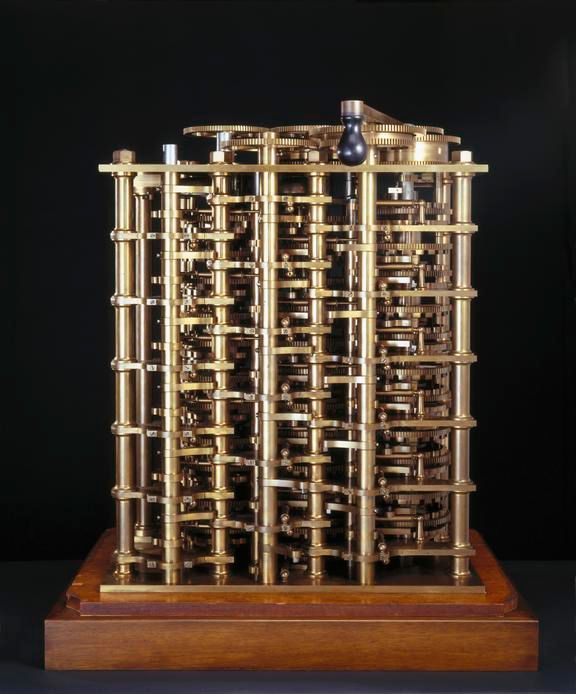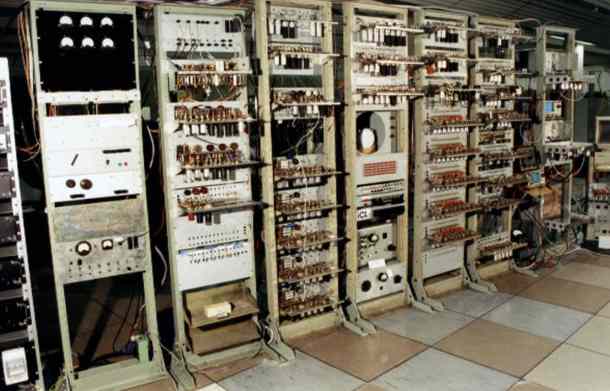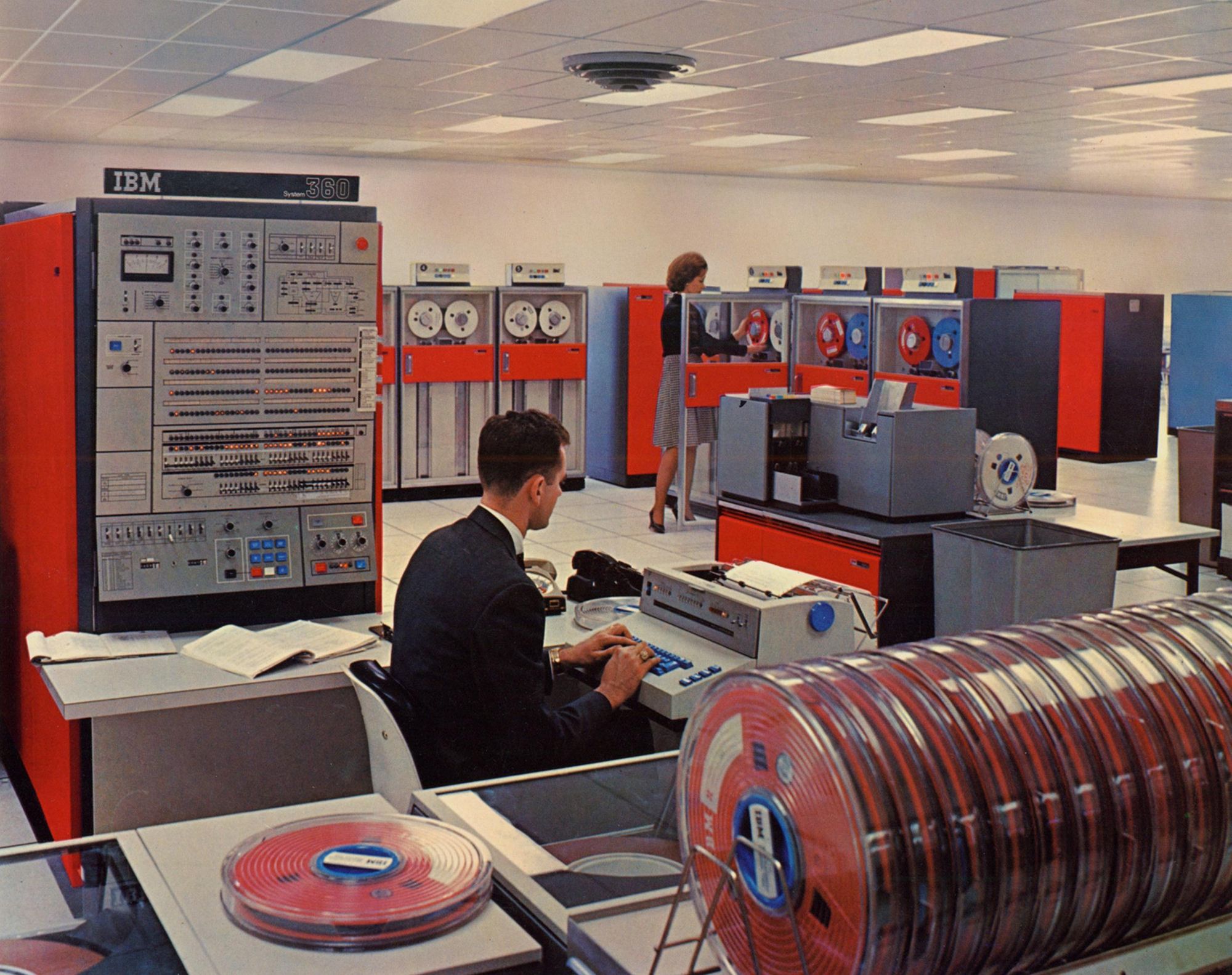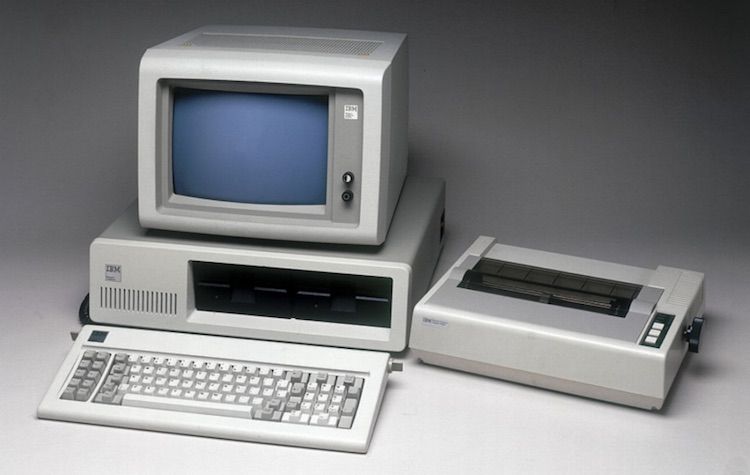How we got to The Cloud (part 1)
We talk of 'The Cloud' as a pretty normal part of our information technology discourse these days. Some accounts trace the birth of the term back to 2006, when the likes of Google and Amazon began using 'cloud computing' to describe the new paradigm in which people started increasingly accessing their software, computer resource, and data over the Web instead of on their desktops. But it wasn't always like this as you can see below.
So here is a brief history of computing, some of the most important technology creations that lead us, and inspired us to where we are today.
Babbage's Difference Engine
Charles Babbage's Difference Engine was designed between 1847 and 1849. Although it was a purely mechanical, driven by a crank handle and containing cogs, gears and levers, it accurately calculated and printed tables of polynomials (I had to google that) that were used for astronomy and ballistics.
Difference engines are strictly calculators. They crunch numbers by repeated addition according to the method of finite differences. They cannot be used for general arithmetical calculation.
Aside from a few partially completed mechanical assemblies and test models of small working sections, none of Babbage's designs were physically realised in their entirety during his lifetime. In 1991, however, the London Science Museum built a model to Babbage's original plans. It worked perfectly.

Colossus
Colossus was a set of computers developed by British code-breakers during World War 2, in the years 1943–1945 to help in the crypt-analysis of the Lorenz cipher. Colossus used thermionic valves (vacuum tubes) to perform Boolean and counting operations. Colossus is thus regarded as the world's first programmable, electronic, digital computer, although it was programmed by switches and plugs and not by a stored program.
The Colossus computers, designed by General Post Office (GPO) research telephone engineer Tommy Flowers. Bletchley Park's use of these machines allowed the Allies to obtain a vast amount of high-level military intelligence from intercepted radiotelegraphy messages between the German High Command and their army commands throughout occupied Europe. The existence of the Colossus machines was kept secret until the mid-1970s.
Colossus contained no less than 2,400 valves. With memory being expensive, the data was operated on directly from paper tape. As a result, the speed of the computer depended on the speed of the tape reader. Operating at 12 metres per second, Colossus had a speed of 5,000 characters per second. A rebuilt Colossus is now on show at the National Museum of Computing at Bletchley Park.

ENIAC
ENIAC (Electronic Numerical Integrator and Computer) was designed and built at the University of Pennsylvania by the US government, and was intended for nuclear weapons research. ENIAC became the world's first programmable, electronic, general-purpose digital computer computer, and designed to do any job according to its programming. It was put to work in 1945.
Despite being the first universal computer, ENIAC differed in several important respects from its various successors. It operated on decimal rather than binary arithmetic, something that contributed massively to the valve count – which was huge, given its rather pedestrian performance. ENIAC was programmed by plugging patch leads and configuring switches. As a result, changing the machine's configuration from one operation to another was a task that would typically take several days to complete.
And how many valves you ask? 17,468 valves of them. Plus 7,200 diodes, 1,500 relays, 70,000 resistors, and 10,000 capacitors, all held together by about five million hand-soldered joints. It weighed 27 tonnes, measured 2.6m x 0.9m x 26m, and consumed 150kW of electrical power. Won't fit in your lounge.

The Manchester Baby
The Small Scale Experimental Machine (SSEM), or Manchester Baby, was completed in 1948. It was dubbed Baby in an effort to differentiate the machine from its successor, the Manchester MK1. It was built at the University of Manchester and ran its first program on 21 June 1948.
The SSEM was groundbreaking. Here was a computer that was fully electronic, truly universal and, for the first time, could execute a program stored in internal memory. As it was the first ever stored program computer, we are able to draw some direct comparisons between the Manchester Baby and today's PCs.
The Baby was designed as a test platform for the Williams tube, the first truly random-access memory. It was the first working machine to contain all the elements essential to a modern electronic digital computer. As soon as The Baby had demonstrated the feasibility of its design, a project was initiated to develop it into a full scale operational machine, the Manchester Mark 1. The Mark 1 in turn became the prototype for the Ferranti Mark 1, the world's first commercially available general-purpose computer.
It had 550 valves and just seven instructions, which could be executed at a rate of 700 per second. It had 32 words of 32-bit memory.

IBM System/360
Its the 1960s, computers were still most definitely for the few, rather than the many. IBM, which had entered the computer market back in 1953, was about to change all that.
The IBM System/360 was launched in 1964, and is one of the most successful mainframe computers of all time. The System/360 had a 32-bit architecture, something that wouldn't make an appearance in the PC market until the 1980s. Although few companies could afford to fully populate them, some models could take up to 4MB of memory.
IBM emerged as head and shoulders above the competition, and went on to dominate the mainframe market for decades. As you can see below, the 360 was enormous. Each component; the CPU, disk drives, tape drives, line printers, operator console were all housed in their own cabinets and modules, which meant that a system would typically require a whole room. And it looked cool too, not like the beige that was about to follow...

DEC PDP-8
Despite the success of the IBM System/360, mainframe computers remained the domain of government departments, large corporations and universities. Generally leased rather than bought, these machines were hugely expensive. By the early 1960s, the race was on to downsize and make computing accessible to smaller organisations.
Digital Equipment Corporation (DEC) introduced the PDP-8 in 1965 and it was the first mini-computer to sell in significant numbers. It was sold for a fraction of the price of even the smallest IBM System/360 mainframe.
The CPU was about the size of one of today's large PCs, and when storage and other peripherals were added, the whole computer was about the size of a domestic fridge. It never sold as many as its successor, the hugely popular PDP-11, which was launched in 1970 – but the PDP-8 got there first.

MITS Altair 8800
Pinpointing exactly when the personal computer revolution started is complicated. But for those the early adopters who got onboard before the masses had even heard of such a thing, the MITS Altair could be ground zero. Kick-starting a revolution, the MITS Altair 8800 appeared on the front cover of Popular Electronics magazine in 1976.
Compared to the room-filling or even fridge-sized computers found in corporations and universities at the time, the Altair was small enough to fit on a desk. It was far less powerful than the big commercial computers of the time, but it was also a huge step up from what most hobbyists had access to. It was powered by Intel’s then-new 8080 microprocessor.
A couple of unknown-at-the-time student-entrepreneurs named Bill Gates and Paul Allen used the Altair to create a version of BASIC. It became the first product Microsoft ever launched.

Apple II
The Apple II was an 8-bit home computer that launched Apple to the world. Unlike other personal computers of its year, the 1977 Apple II was capable of displaying color. It was one of the world's first highly successful mass-produced computer products.
It was designed by Apple co-founder Steve Wozniak, with its iconic industrial design by Jerry Manock looking more like a household appliance than a geeky piece of hobbyist tech. Steve Jobs oversaw the development of Apple II's foam-molded plastic case
It was introduced by Jobs and Wozniak at the 1977 West Coast Computer Faire, and marks Apple's first launch of a personal computer aimed at the consumer market rather than corporations or hobbyists.
The Apple II had great longevity too, with variants of it still being made in the 1990s. In all, the Apple II laid the foundations for not just Apple, but the mass-market personal computer industry as a whole.

IBM PC 5150
The DEC PDP-8 and the mini-computer era it inspired ruled, and it took another 16 years for the next leap forward to come along. The likes of the the Apple II and the Commodore PET were good for the interim, but they were all overshadowed by the IBM 5150. This pioneering computer was launched in 1981 and it kick-started the desktop PC revolution. The desktop PC or laptop you're using today is very much its direct descendant.
The PC had a substantial influence on the personal computer market. The specifications of the IBM PC became one of the most popular computer design standards in the world. The machine was based on open architecture and third-party peripherals. Over time, expansion cards and software technology increased to support it.
Software support from the industry grew rapidly, with the IBM almost instantly becoming the primary target for most microcomputer software development. One publication counted 753 software packages available a year after the PC's release, four times as many as the Macintosh had a year after its release. Hardware support also grew rapidly, with 30–40 companies competing to sell memory expansion cards within a year.

I will cover off some more recent stuff, post 90s, in Part 2.
